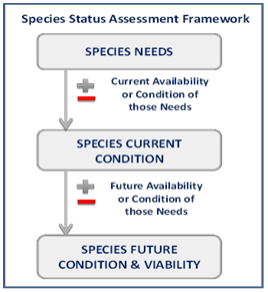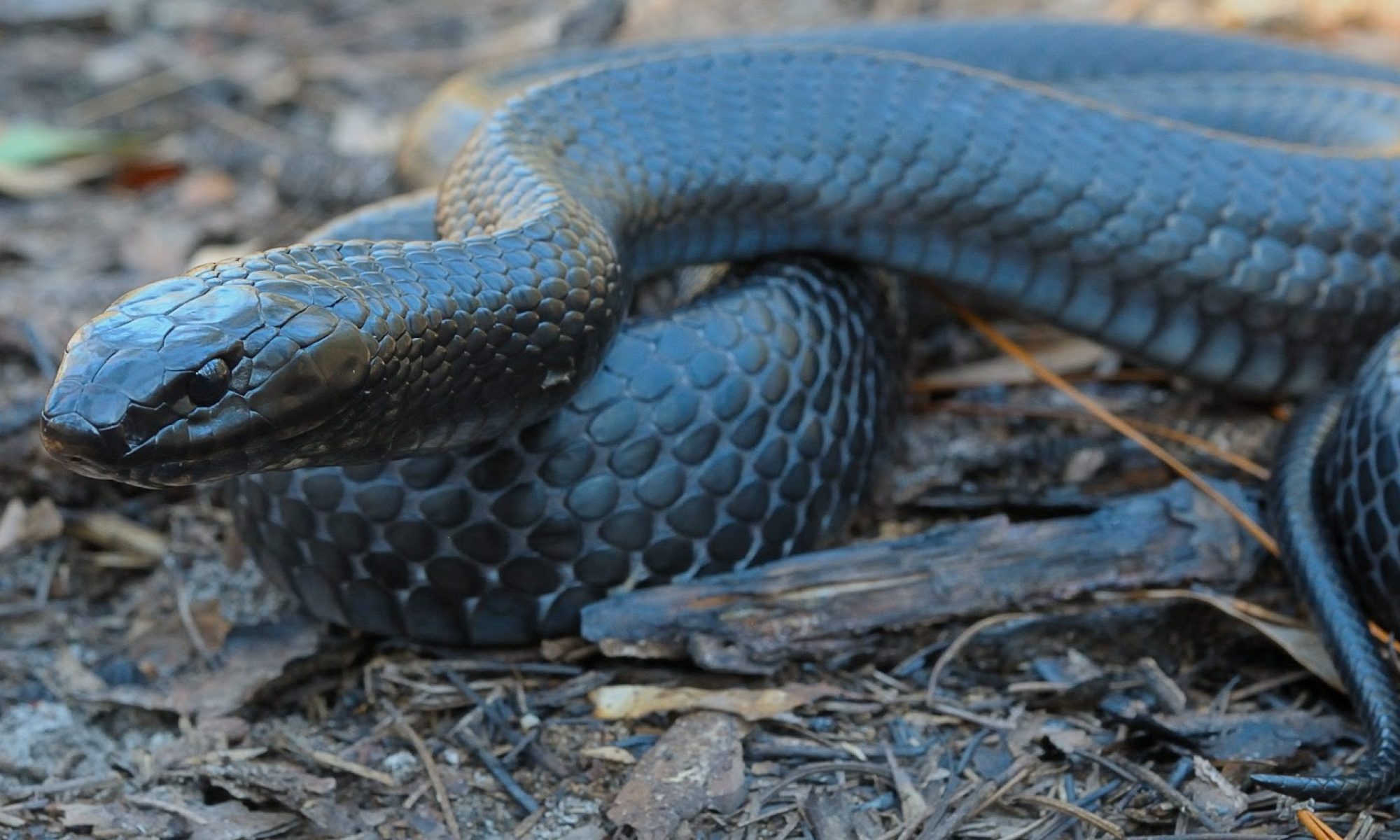The eastern indigo snake (Drymarchon corais couperi, hereafter recognized by its currently accepted name Drymarchon couperi [Collins (1991, p.43, Wüster et al. 2001, p.163, Crother 2012, p.59]) is a large, iridescent-black, non-venomous snake in the Colubridae Family with natural populations occurring in portions of Florida and southeastern Georgia. Historically, the eastern indigo snake occurred throughout Florida and in the coastal plain of Georgia, Alabama and Mississippi. The species was listed as threatened on March 3, 1978 under the Endangered Species Act (ESA) due to threats from habitat modification, collections for the pet trade and gassing while in gopher tortoise (Gopherus polyphemus) burrows (USFWS 1978). A Recovery Plan was published in 1982 (USFWS 1982). Since listing under the ESA, wild collection of eastern indigo snakes for the pet trade and gassing of gopher tortoise burrows are no longer believed to be significant threats; however, habitat modification remains a significant influencing factor. The current distribution for the eastern indigo snake has contracted from its historical distribution. Some of the range contraction has occurred since listing under the ESA, particularly in the Florida Panhandle due to the decline of gopher tortoise populations (Enge et al. 2013); however conservation efforts are underway to repatriate gopher tortoise and eastern indigo snake populations in this region.
Since listing under the ESA, a lot has been learned about the biology and ecology of the eastern indigo snake, and the U.S. Fish and Wildlife Service (Service) has worked closely with partners to make progress towards recovery of the species. The Species Status Assessment (SSA) framework (Smith et al. 2018, entire) summarizes the information compiled and reviewed by the Service, incorporating the best available scientific and commercial data, to conduct an in-depth review of the species’ biology, evaluate its biological status and influencing factors, and assesses the resources and conditions needed to maintain long-term viability. The intent is for the SSA to be easily updated as new information becomes available and to support all functions of the Endangered Species Program from Listing to Consultations to Recovery. This first version of the eastern indigo snake SSA will be used to inform the upcoming Five Year Review (in 2019) of the species and then to revise the species’ Recovery Plan (to include measurable recovery criteria), and the Recovery Implementation Strategy. This SSA provides a review of the available information strictly related to the biological status of the eastern indigo snake and its viability.
Using the SSA framework (Figure 1), we consider what the eastern indigo snake needs to maintain viability by characterizing the status of the species in terms of its resiliency, representation and redundancy (together the 3R’s) (Smith et al. 2018, entire). For the purpose of this assessment we generally define viability as, the ability of the species to sustain populations in its natural systems over time.
The definitions of the 3Rs are:
- Resiliency describes the ability of a population to withstand stochastic disturbance. Resiliency is positively related to population size and growth rate and may be influenced by connectivity among populations.
- Representation describes the ability of a species to adapt to changing environmental conditions over time as characterized by the breadth of genetic and environmental diversity within and among populations.
- Redundancy describes the ability of a species to withstand catastrophic events by spreading risk among multiple populations or across a large area.

To evaluate the biological status of the eastern indigo snake, both currently and into the future, we assessed a range of conditions that allowed us to consider the species’ resiliency, representation and redundancy. This SSA provides a thorough assessment of biology and natural history, and assesses demographic risks, stressors, and limiting factors in the context of determining the viability and risks of extinction for the species.
The format for this SSA includes: species biology, species needs, influences on viability, current conditions and future conditions. This document is a compilation of the best available scientific and commercial information, and a description of past, present, and likely future risk factors to the eastern indigo snake.
